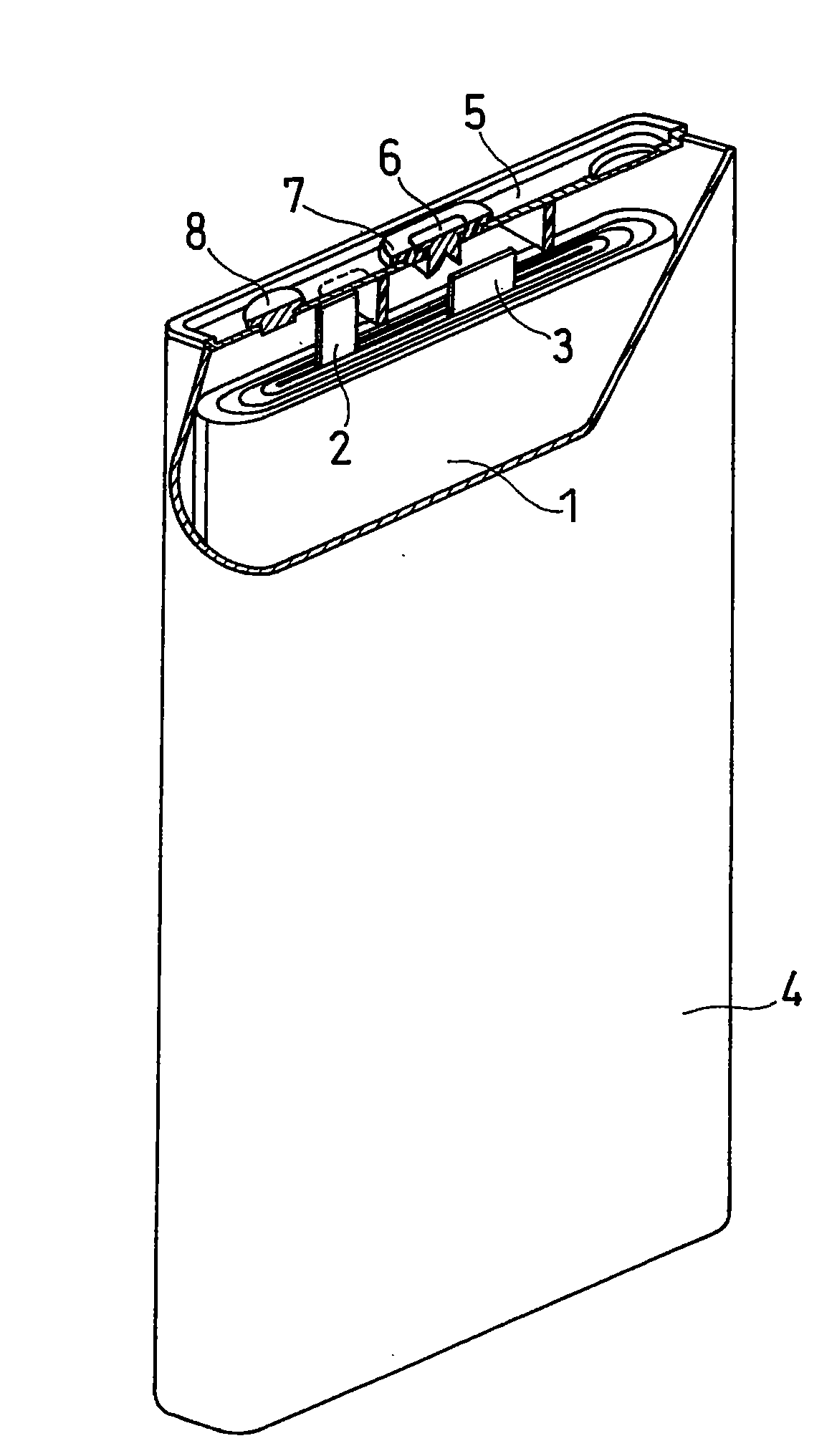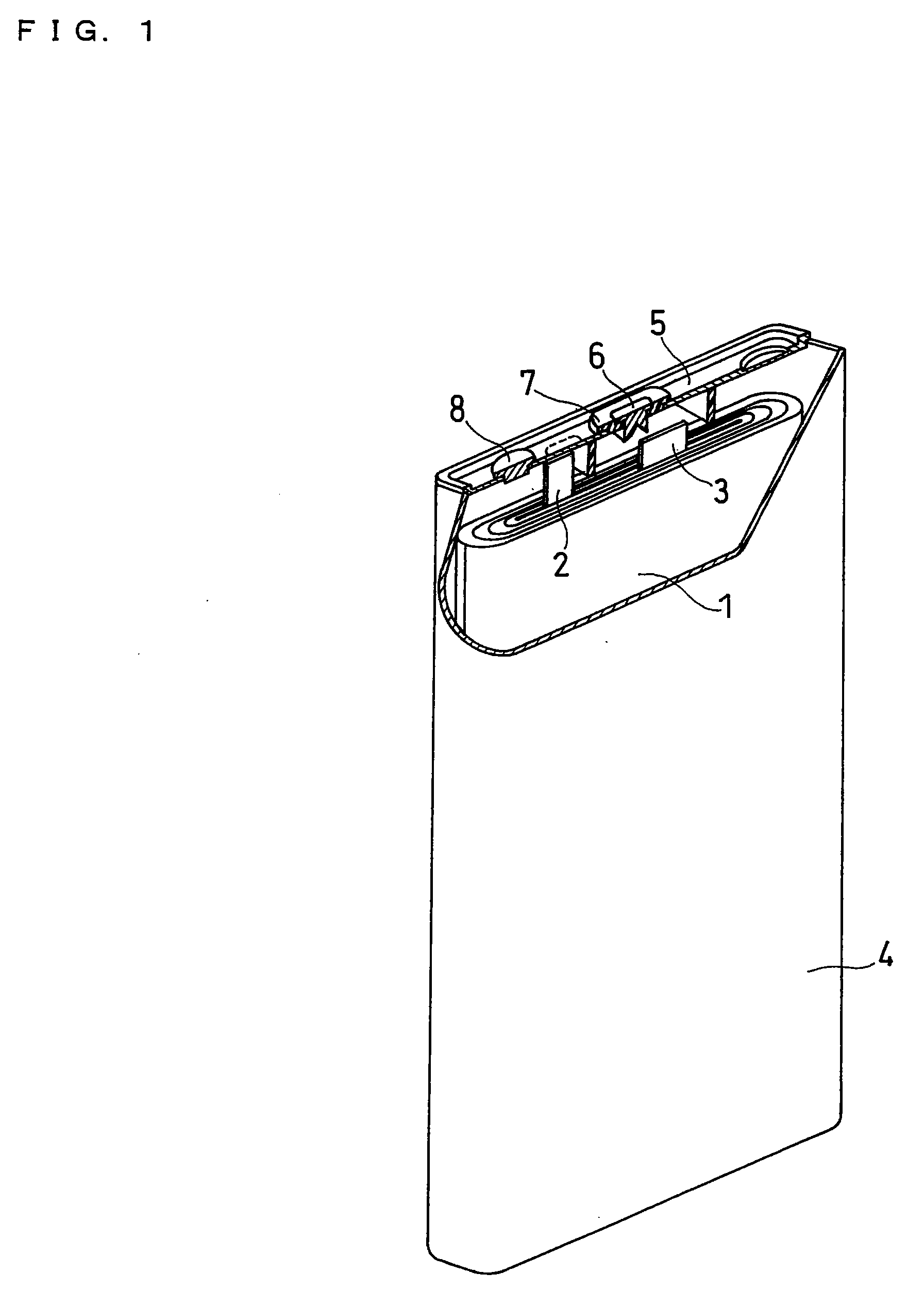Separator for use in non-aqueous electrolyte secondary battery and non-aqueous electrolyte secondary battery
- Summary
- Abstract
- Description
- Claims
- Application Information
AI Technical Summary
Benefits of technology
Problems solved by technology
Method used
Image
Examples
examples
(i) Fabrication of Positive Electrode
[0072]An aqueous solution containing cobalt sulfate at a concentration of 0.20 mol / L and containing nickel sulfate at a concentration of 0.80 mol / L was supplied continuously into a reaction bath. Into the reaction bath, sodium hydroxide was dropped until the pH of the aqueous solution reached 10 to 13, whereby Ni0.80CO0.20(OH)2 was synthesized. Thereafter, this hydroxide was washed with water sufficiently, and then dried, to yield a precursor of positive electrode active material. The resultant precursor was mixed with lithium carbonate such that the molar ratio among lithium, nickel and cobalt became 1.02:0.80:0.20. The resultant mixture was pre-baked at 600° C. for 10 hours, and then pulverized. The pulverized baked material was baked again at 900° C. for 10 hours, and then pulverized and classified, whereby a lithium-containing composite oxide represented by the formula: Li1.02Ni0.80Co0.20O2 was obtained.
[0073]A positive electrode material mix...
PUM
 Login to View More
Login to View More Abstract
Description
Claims
Application Information
 Login to View More
Login to View More - R&D
- Intellectual Property
- Life Sciences
- Materials
- Tech Scout
- Unparalleled Data Quality
- Higher Quality Content
- 60% Fewer Hallucinations
Browse by: Latest US Patents, China's latest patents, Technical Efficacy Thesaurus, Application Domain, Technology Topic, Popular Technical Reports.
© 2025 PatSnap. All rights reserved.Legal|Privacy policy|Modern Slavery Act Transparency Statement|Sitemap|About US| Contact US: help@patsnap.com



